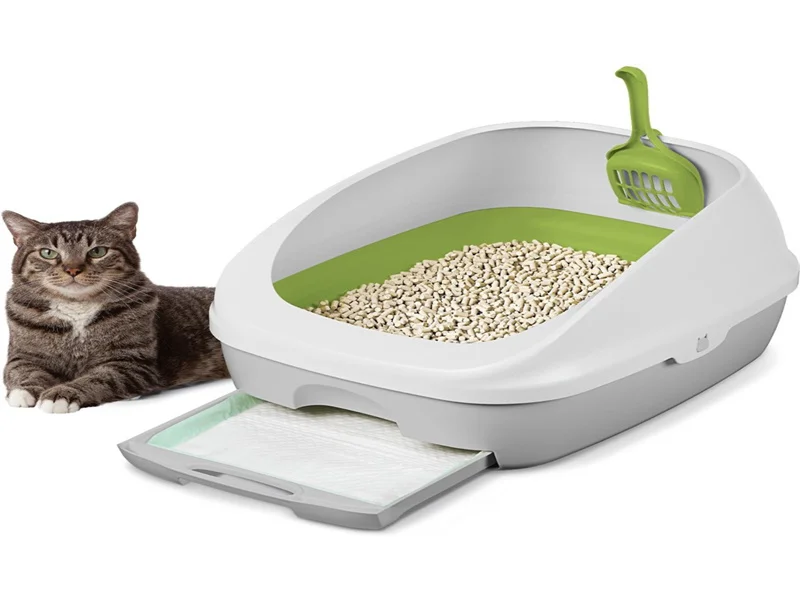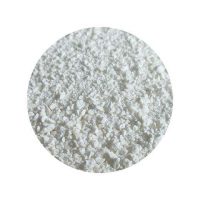Cats are adorable companions that bring joy and comfort into our lives. With more people adopting cats than ever, creating a welcoming environment for our furry friends is essential.
However, one common issue many cat owners face is a stinky litter box. Odors from a cat litter box can quickly permeate the home, turning a cozy atmosphere into an unpleasant one.
In this article, we’ll explore “how to make cat litter not stink”, helping you maintain a fresh and inviting space for both you and your cat.
Why Cat Litter Boxes Stink

Cat litter boxes can develop unpleasant odors for various reasons, which often intertwine. Understanding these causes is crucial for effective management:
Poor Hygiene:
Infrequent cleaning is the leading cause of odors. When waste is left to accumulate, it not only smells but can also deter your cat from using the box. Regular cat litter scooping is essential to maintain a fresh environment.
Type of Cat Litter Used:
Not all cat litters are created equal. Some litters, especially those made from low-quality materials, may fail to absorb moisture effectively or control odors. Look for litters specifically designed for odor control.
Frequency of Cleaning:
Even if you scoop daily, not replacing the litter regularly can lead to lingering smells. It’s essential to clean the box thoroughly and replace the litter on a regular schedule.
Health Issues in Cats:
Sometimes, strong odors can indicate a health problem, such as a urinary tract infection or digestive issues. If you notice a significant change in odor, consult your veterinarian.
How to Choose Cat Litter?

Selecting the best cat litter for your feline friend can be a bit overwhelming given the wide variety of options available. Here are some key factors to consider:
Cat Litter Type
- Clay-Based: This is the most common type, known for its clumping ability and odor control. However, it can be dusty and tracking can be an issue.
- Silica Gel: This type is lightweight, non-tracking, and highly absorbent. It’s also effective at odor control, but can be expensive.
- Plant-Based: Options like tofu, wheat, and corn-based litters are eco-friendly and often low-dust. They may not be as effective at odor control as other types.
- Recycled Materials: These litters are made from recycled paper or wood, offering a sustainable choice.
Clumping vs. Non-Clumping
- Clumping: This type forms clumps when wet, making cleanup easy.
- Non-Clumping: This type doesn’t clump, requiring you to replace the entire litter frequently.
Odor Control
- Activated Carbon: This ingredient helps neutralize odors.
- Natural Ingredients: Some plant-based litters naturally absorb odors.
Dust Content
- Low-Dust: This is ideal for cats with respiratory issues or sensitive noses.
Tracking
- Non-Tracking: This type minimizes litter being tracked throughout your home.
Your Cat’s Preferences
- Texture: Some cats prefer a fine-grained texture, while others prefer a coarser one.
- Scent: Avoid scented litters, as they can irritate your cat’s sensitive nose.
Environmental Considerations
- Biodegradability: If you’re eco-conscious, choose a biodegradable litter.
- Dustiness: Consider a low-dust option to reduce indoor air pollution.
Remember, finding the perfect litter for your cat may take some trial and error. Start with a small amount and observe your cat’s behavior. If your cat shows discomfort or avoids the litter box, it might be time to try a different option.
Selecting the Right Cat Litter

Choosing the right litter is essential for minimizing odors and ensuring your cat’s comfort:
Types of Cat Litter:
Clumping Litter:
This type forms solid clumps when wet, making it easy to remove waste and control odors. Many brands now include odor-neutralizing agents.
Non-Clumping Litter:
While often less effective at controlling odors, some natural non-clumping litters can be good alternatives for eco-conscious pet owners.
Crystal Litter:
Made from absorbent crystals, this type can absorb moisture and control odors well. However, it may not clump, which can be less convenient for some owners.
Natural Litters:
These are made from plant-based materials and often have better odor control and sustainability.
Best Cat Litter for Stinky Poop:
Look for brands that advertise odor control features, such as those containing baking soda or activated charcoal. These additives can significantly reduce odors.
It may take some experimentation to find the right litter for your cat. Pay attention to your cat’s preferences and any changes in odor control.
You can take a look at our products. Our products are made of corn, rice and other plants. They can completely absorb cat urine and reduce odor.
You can also click on this article: What is cat litter made of to learn more about cat litter.
How to Make Cat Litter Not Stink
If your litter box has developed persistent odors, it’s essential to take immediate action:
Deep Cleaning Techniques:
Start by completely emptying the litter box. Scrub it with warm, soapy water, focusing on any corners or crevices where waste may have accumulated. A solution of vinegar and water can effectively neutralize odors.

Deodorizing Solutions:
After cleaning, sprinkle baking soda in the bottom of the box before adding fresh litter. Baking soda is a natural odor absorber that can help keep the litter box smelling fresh.
Tips for Removing Lingering Smells:
If odors persist even after cleaning, consider replacing the litter box itself, especially if it’s made from plastic that may have absorbed smells over time.
Additionally, ensure proper ventilation in the area where the box is located to help dissipate odors.
Preventing Future Odors

To keep your cat litter box smelling fresh in the long run, implement these effective habits:
Regular Scooping Schedule:
Aim to scoop waste at least once daily. The more frequently you remove waste, the less chance odors have to build up.
Proper Disposal of Waste:
Use sealed bags to dispose of waste, whichhelps contain odors during disposal. Consider flushing waste if your plumbing allows for it.
Using Litter Box Liners or Mats:
These can help contain messes and make cleaning easier. Liners can catch stray litter and waste, while mats can trap litter that your cat kicks out of the box.
Monitoring Your Cat’s Health:
Keep an eye on your cat’s litter box habits. Any sudden changes in odor or consistency may indicate a health issue that requires veterinary attention.
By taking these proactive measures, you can maintain a fresh-smelling environment for both you and your cat, ensuring a happy and comfortable home.
Conclusion
By taking proactive measures in choosing the right litter box and litter, maintaining cleanliness, and addressing odors promptly, you can effectively manage the challenges of a stinky litter box.
Implementing these tips will not only improve your living environment but also ensure a happier, healthier space for your beloved cat.
Related FAQs
Why does my cat litter stink so bad?
The most common reasons include infrequent cleaning, the type of litter used, and possible health issues in your cat. Regular scooping and using high-quality litter can help.
What is the best litter for stinky cats?
Look for clumping litters with added odor-control features, such as those containing activated charcoal or baking soda.
How often should I change cat litter to prevent odors?
Aim to change the litter entirely every 1-2 weeks, depending on the litter type and your cat’s usage.
How do you make litter odorless?
While it’s challenging to make litter completely odorless, you can significantly reduce smells by using odor-absorbing additives like baking soda in the litter box. Choose clumping litter with built-in odor control features and regularly clean the box. Ensuring proper ventilation in the area and replacing old litter boxes can also help minimize odors.
Why is my cat litter so smelly?
Cat litter can become smelly due to several factors, including infrequent cleaning, the type of litter used, and the health of your cat. If waste is left to accumulate, it can create strong odors. Some litters may not absorb moisture effectively, leading to unpleasant smells. If the odor is particularly strong, it may indicate a health issue with your cat, such as a urinary tract infection, which requires veterinary attention.












